Searching for the ultimate high, teens share drugs, mix drugs and succumb to the ill after-effects that drugs impose on them. They are often smart enough to know that the drug will make them feel awful after the high has worn away, but addiction doesn’t respond well to this reasoning. To truly break a drug addiction, teens need professional guidance and treatment.
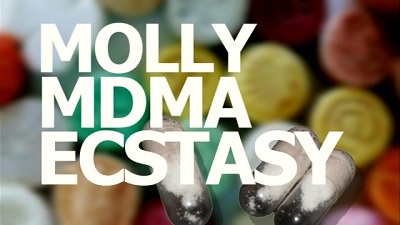
Courtesy of: www.pentagonpost.com
Molly, also known as ecstasy or MDMA, promises teens an exhilarating feeling. In an NBC news report, one young man said that he was lured by the intense high that Molly gave him. He was looking for something new and someone suggested to him that Molly was like a new form of the drug ecstasy.
MDMA’s Short High And Dangerous Side-effects
His first encounters with Molly made him feel great. He said that the drug made him feel very happy and excited. He felt on top of the world and it was exactly what he was looking for. But the happiness didn’t last long and the young man soon realized that the short time he was high came with a long sentence of feeling completely worn out, both physically and mentally.
When teens search for a great high, they don’t think about the ill effects the drug may cause. Part of that comes from living in the moment and not worrying about the consequences. Some might even say the consequences are worth it. But over time, the consequences get more intense, and like a wheel racing downhill they can’t find a way to stop, event when the consequences become too overwhelming and change their life for the worst.
When self-esteem plummets and fatigue becomes overwhelming, some teens may try to stop using by themselves. Molly causes withdrawal symptoms like heavy sweating, overheating, high blood pressure, extreme dehydration and in some cases death. It can also affect teens psychologically, sometimes causing short term psychosis.
How Addiction To Molly Takes You To A New Low
The young man who was interviewed by NBC said that he knew he was letting Molly control him when he started selling his child’s toys in order to get money for drugs. He could not believe the person that he had become and how his need for the drug had changed him so much. He had also been lured by the media, knowing that popular movie stars and musicians were using the drug.
Recovery From The Lows Of Molly
The only way he was able to break free from Molly was through a treatment center that guided him back into better mental and physical health. Through his experience he cautions teens to stay away from the lure of that high that inevitably and impersonally drops you off into the lowest low.
Each year the Substance Abuse and Mental Health Services Administration (SAMHSA) conducts a National Survey on Drug Use and Health. The results of the 2012 survey have been published and coincide with the September observance of National Recovery Month.
For the most part, the report held good news showing how some worrying trends have begun to reverse. According to the 2012 study, abuse of alcohol, tobacco and even prescription drugs is on the decline.
It is helpful to compare SAMHSA studies over the past decade to get a picture of how substance use is trending among America’s youth. There was good news in terms of certain substances and no progress in either direction in terms of other substances. Here is some of what the 2012 SAMHSA report had to say:
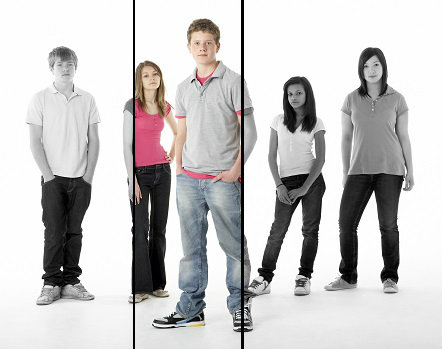
SAMHSA Report On Prescription Drug Abuse
The news on prescription drug abuse was encouraging and showed just how effective increased awareness and minor behavioral changes can be. Just four years ago 6.4 percent of 18 to 25 year olds were abusing prescription medications each month. In 2012 that number had dropped to just 5.3 percent and figures were very similar in 2010 and 2011. Public awareness, tighter controls on medications and targeted treatments all contributed to the improved statistics in this area
Alcohol Use Trend From SAMHSA Report
The SAMHSA report also showed that rates of drinking, even heavy drinking and binge drinking, by 12 to 17 year olds were lower compared to the numbers of teens drinking in 2002 and 2009. In 2002 around 14.2 percent of teens drove while under the influence of alcohol but that figure dropped to 11.1 percent in 2011 and inched up only slightly to 11.2 percent in 2012.
SAMHSA On Tobacco Use
Tobacco use was another bright spot in the report. Just over 15 percent of teens less than 18 years old reported smoking tobacco in 2002 but that dropped precipitously to 8.6 percent in 2012.
Illegal Drug Use From SAMHSA Report
Use of illegal drugs has held pretty much steady in recent years, right at 9 percent. Marijuana has grown in popularity for nearly a decade. In 2007, 5.8 percent of teens reported using marijuana, but in 2012 that number rose to 7.3. There was a slight decline in the number of those reporting marijuana use between 2011 (7.9 percent) and 2012 (7.2 percent) but it remains the most widely used illicit drug among teens.
Rates of drug abuse and drug addiction fell from nine percent in 2002 to six percent in 2012 but there is still so much progress needing to be made. According to SAMHSA estimates, 23 million Americans needed substance abuse treatment in 2012, but only 2.5 million received specialized care. It is important to be energized by the recent successes and redouble efforts to see prevention and intervention programs become the norm.
To See More About Trends In Teen Substance Abuse – Click Here
For nearly a quarter century now the state of Indiana has been conducting a youth substance use survey. The data is used to direct prevention and intervention strategies and to gauge how well those efforts are working. The most recent annual survey of alcohol, tobacco and other drug use, the Indiana Youth Survey 2013, reflects current trends in teen behaviors and attitudes and shows that some interventions are proving successful.
 The survey questioned 117,554 teens from private and public schools attending grades six through senior in high school. The survey is conducted in conjunction with the Indiana Prevention Resource Center who makes resources available to schools and communities aimed at curbing teen substance abuse.
The survey questioned 117,554 teens from private and public schools attending grades six through senior in high school. The survey is conducted in conjunction with the Indiana Prevention Resource Center who makes resources available to schools and communities aimed at curbing teen substance abuse.
Use of marijuana by teens (12 to 17 years) hit an all-time high in the state between 2008 and 2011. The good news is that the most recent survey shows that marijuana use is now falling among teens there. However, while marijuana use is dropping, its use is still seen as too high, and synthetic marijuana use is an increasing concern.
Synthetic Marijuana Use Dangerously Increasing
Synthetic marijuana is just what it sounds like — a man-made substance that mimics marijuana. It is made by drying plant material and then spraying it with chemicals which mirror the effects of marijuana and THC. The plant material is then chopped and marketed in stores as incense, but kids roll it and smoke it just like natural marijuana. In fact, the survey shows that teens are not substituting fake marijuana for real marijuana but are using the two drugs simultaneously.
This year’s survey included new questions related to risk factors and protective factors that influence teen drug use. Questions pertaining to the health of relationships and attitudes reveal the degree of risk or protection teens are experiencing. The attitudes of parents and friends about drug use influences teens greatly, as do how well relationships at home, school and among peers are faring.
Prescription Drug Abuse
The survey found that prescription drug abuse increases with age. Less than two percent of sixth graders reported abusing prescription drugs, but more than 14 percent of seniors admitted using. The survey was specific in asking teens if they bought prescription drugs from friends or obtained them from family members. Since a major protective factor against prescription drug abuse is a teen’s perception of danger, the survey highlights the need for more information and better education strategies letting kids know just how dangerous misuse of prescription drugs can be.
Other news found in this year’s survey included success in lowering the numbers of teens who engage in gambling (online, lottery, slot machines etc.). Teen gambling rates have dropped in Indiana and the survey revealed that teen regret/remorse over gambling is increasing.
Parents may now find more reason to monitor their teen’s use of social networking sites: Teens that see social networking pictures of their buddies partying with alcohol and tobacco are much more likely to use those substances.
 The study was conducted by a team from the University of Southern California (USC) Keck School of Medicine that questioned 1,563 sophomore students from a Los Angeles high school on two separate occasions — once in October 2010 and then again in April 2011. Researchers asked the teens about friendships they had online through social media and also about their face-to-face friendships. They asked teens how often they utilized social networking sites and which ones they tended to use. They also asked teens about whether or not they themselves ever smoked tobacco or drank alcohol.
The study was conducted by a team from the University of Southern California (USC) Keck School of Medicine that questioned 1,563 sophomore students from a Los Angeles high school on two separate occasions — once in October 2010 and then again in April 2011. Researchers asked the teens about friendships they had online through social media and also about their face-to-face friendships. They asked teens how often they utilized social networking sites and which ones they tended to use. They also asked teens about whether or not they themselves ever smoked tobacco or drank alcohol.
The USC study, which was published in the Journal of Adolescent Health, is among the first to carefully investigate the way social networking behavior affects the use of alcohol and tobacco among teens.
High School Study Participants
The student participants were equally divided between girls and boys and the average age was 15. The study population generally reflected the racial make-up of the high school with one quarter of participants being Asian and two-thirds Hispanic. Right around 50 percent of the students involved in the study said they were regular visitors to social networking sites like Facebook or MySpace.
Around 30 percent of the high school students questioned said they had smoked cigarettes and above 50 percent of them said they had tried alcohol. One-third of the students said that they had a minimum of one friend who either smoked cigarettes or drank alcohol. The baseline was important in gauging how much viewing other students’ behavior might be considered as influencing their own.
When questioned, 20 percent of the students said that they had friends who posted pictures online of smoking, drinking and partying. Another 34 percent of the students said that they had at least one friend who mentioned partying (especially drinking or smoking tobacco) in their online discussions or postings. Between October 2010 and April 2011 the student use of Facebook increased by 75 percent and use of MySpace rose by 13 percent.
Results On Teens From Alcohol Posting On Social Networks
After analyzing the data, researchers found that teens are definitely influenced by online photos of their friends’ behavior, saying it didn’t seem to matter whether a teen had many or fewer friends in their network. What did seem to matter was what kind of pictures were posted by those friends.
Even if a teen did not have close, face-to-face friendships with kids who drank or smoked, they were nevertheless at risk for being affected by more exposure to pictures of those behaviors posted online. In other words, peer pressure and peer influence definitely extends into cyberspace.
The research backed up prior findings that show a difference between users of Facebook and MySpace. Teens that were only on Facebook tended to speak more English, come from higher social strata and get better grades. They also tended to not be Hispanic and were less likely to have ever tried smoking or drinking. Users of MySpace primarily tended to drink more, and the more they used MySpace the more they tended to drink.
Since 95 percent of American teens (ages 12 to 17) are online and 80 percent stay connected through sites like Facebook, these findings are extremely relevant. It isn’t only who kids hang out with at home or on the soccer field — it matters who teens connect with online. When kids are online there are any number of friends that parents may never meet in person.
24 Sep 2013
Do Teens Know the Truth About Molly?
Who is Molly? Molly is the new name for the decades-old drug ecstasy, the drug that was responsible for three deaths and four people being hospitalized in critical condition over this past Labor Day weekend.
Description Of Molly
Molly is a synthetic, or man-made, drug. It first showed up on the streets in the 1980s as ecstasy. At the time it was called a club drug because young people enjoyed taking it when they went dancing, attended concerts or large parties. Today it’s sold in powder form, usually in capsule form but also sold as pills or tablets, with “Molly” connoting molecular purity.
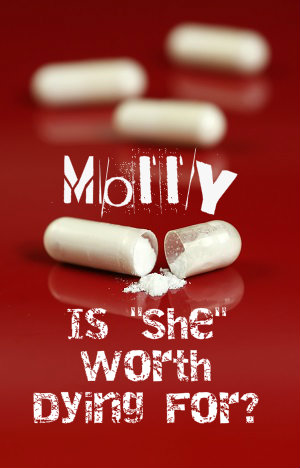 The pills are brightly colored and sometimes emblazoned with cartoonish images. Officially the drug is known as MDMA, which stands for 3,4-Methylenedioxymethamphetamine. If you saw a few words in there you thought you recognized like amphetamine and meth you were right. The drug is a stimulant, or amphetamine, resembling methamphetamine in the way it increases heart rate and stimulation while providing feelings of euphoria.
The pills are brightly colored and sometimes emblazoned with cartoonish images. Officially the drug is known as MDMA, which stands for 3,4-Methylenedioxymethamphetamine. If you saw a few words in there you thought you recognized like amphetamine and meth you were right. The drug is a stimulant, or amphetamine, resembling methamphetamine in the way it increases heart rate and stimulation while providing feelings of euphoria.
MDMA is a concoction combining a stimulant with an empathy-boosting chemical plus a psychedelic. Kids like to take Molly at large group events because the drug makes them feel more energized, less inhibited and closer to those around them. There’s also a sensation of heightened alertness.
Molly’s Risks
There’s also a down-side as it can lead to blurry vision, racing blood pressure and heartbeat and muscle cramps. Sometimes the person’s insides are so revved up that they develop hyperthermia. Long hours of dancing and pressing up against people in a crowd make heat stroke likely. Increased heart rate can easily become an arrhythmia or erratic heartbeat, and seizures have also been known to occur.
MDMA may ratchet up energy and perception but it often pulls down the user’s emotions, leaving them feeling depressed, sad and anxious. Problems with memory can result and these difficulties sometimes last up to a week or more. When a young person decides to mix MDMA with alcohol they increase the sedative effects as well as increasing their risk of becoming dehydrated.
The risk of dehydration with use of MDMA is real, so lots of users try to compensate by drinking more water. However, since it causes the body to retain fluids, the combination of MDMA and water can quickly create an imbalance of electrolytes. Kids who choose to combine Molly with caffeine increase their risk of dehydration while also dangerously increasing body temperature.
Impure MDMA
Called Molly because of supposed molecular purity, the drug is no more pure than any other illicit drug. In fact, MDMA is often cut or completely replaced with another substance known as PMA which produces similar effects. Some deaths attributed to MDMA have actually been caused by PMA. More than that, street drugs are made with no regulating oversight, meaning every batch is unique and users can’t expect one tablet to affect them precisely the same as the last. Many high profile deaths come about because a celebrity is using street drugs in a new city and expecting them to be exactly like those they used in another city — it just doesn’t happen that way.
Celebrity Push Of Molly
Ecstasy, MDMA, Molly — whatever you call it, the drug is enjoying renewed popularity spurred on by pop singers like Madonna, Kanye West and Miley Cyrus. The Monitoring the Future studies conducted by the National Institute on Drug Addiction report that MDMA is experiencing a resurgence among 20-somethings and even high schoolers.
Strong Opportunity For Parents And Teachers
The recent tragic deaths at the Electronic Music Festival in New York provide an opportunity for parents and teachers to talk with teens about the realities of using drugs like MDMA. No matter what pop singers or friends might say, no experience is worth dying for.
The misuse of prescription drugs has become a serious problem in the United States. In many situations a prescription is written for a legitimate health problem, it’s used for a time and then left forgotten in a medicine cabinet.
Teens raid their parents’ and other relatives’ medicine cabinets to pilfer prescription drugs and the drugs are taken to parties where they’re mixed in combination with various other drugs. This practice can be dangerous, even deadly.
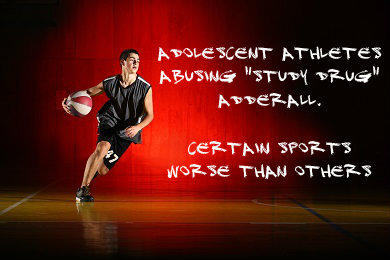 While pain medications are a common choice, another drug readily available is Adderall, which is prescribed for attention deficit hyperactivity disorder (ADHD). This stimulant can allow students to focus and avoid sleep for days in an effort to work on a task or study. However, there are dangerous side effects, including heart palpitations and painful urination.
While pain medications are a common choice, another drug readily available is Adderall, which is prescribed for attention deficit hyperactivity disorder (ADHD). This stimulant can allow students to focus and avoid sleep for days in an effort to work on a task or study. However, there are dangerous side effects, including heart palpitations and painful urination.
The Study
Along with improved academic performance, Adderall can also improve athletic performance. A recent study published in the Journal of Studies on Alcohol and Drugs provides an analysis of Adderall use among adolescent athletes.
The researchers accessed data from the Monitoring the Future survey that gathered information from 8th and 10th graders in 2010 and 2011. The survey included 21,137 teens and measured the past-year non-medical use of the drug and used logistic regression analysis to determine if there was a connection between the level of involvement in competitive sports and nonmedical Adderall use.
The results showed that Adderall use was more pervasive in certain sports and there were differences between the genders. Males that played lacrosse and males that wrestled were more likely to use the drug, while females did not show any patterns of use based on particular sports.
The Findings
The study’s findings showed that certain sports, particularly those involving a high level of contact, may lead to pressure among males to improve performance through a stimulant like Adderall.
How Parent’s Can Help
Parents may not realize the stress that their children deal with as they compete for grades and placement on sports teams. In many cases, the teen may feel that parental expectations are adding to their stress, so a parents’ reassurance may help them avoid the danger of drug use.
Parents can help their children avoid the misuse of Adderall and other prescription drugs by talking regularly about the pressures of school and extracurricular activities, including sports. They can also work to maintain some level of contact with teachers and coaches to help ensure that their teen is exhibiting healthy behaviors related to school, sports and extracurricular activities.
Click Here – To Read More About Teen Substance Abuse
Prevention and early intervention are key elements in reducing the number of teens that use drugs. In order to identify and target teens for education and intervention, however, it is important to understand what factors make a teen likely to use.
There are differences, too, in various subgroups of the population that can influence which factors make drug use likely. Urban teens have different risk factors than rural teens, for instance, and black teens are likely to use drugs for different reasons than white teens.
Understanding Trends Are Critical
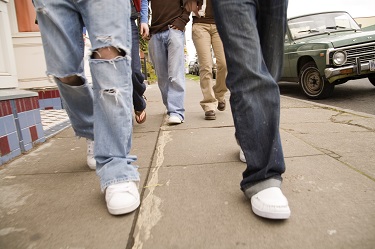 It is critical to understand the trends that affect teens and that might impact whether they initiate drug use. Often, those teens that experiment with drugs go on to develop a drug addiction by the time they reach early adulthood. The transition to early adulthood is characterized with decisions that can impact career choice and even marriage and family, so it is critical that drug use be reduced in this population.
It is critical to understand the trends that affect teens and that might impact whether they initiate drug use. Often, those teens that experiment with drugs go on to develop a drug addiction by the time they reach early adulthood. The transition to early adulthood is characterized with decisions that can impact career choice and even marriage and family, so it is critical that drug use be reduced in this population.
Among Hispanic teens, experts have observed that the process in which an immigrant teen has adapted to his or her host country’s culture, or acculturation, is a predictor of drug use. However, while studies have shown a correlation between acculturation and drug use, the nature of the connection is not fully understood. A new study has shown the pathways that connect acculturation with teen drug use among Hispanics.
The researchers enrolled 1,040 Hispanic students from high schools in California. The students were recruited through a substance use prevention effort being used in the school.
Linguistic Connection
The researchers administered questionnaires at the beginning of the study, and then again at a one-year follow-up period. Included in the questionnaires were measures of several different factors. The students were asked about their linguistic acculturation, with questions that sought to establish, for instance, the primary language used by the student.
The students were also asked about their social self-control, with questions such as whether a student encountered difficulties in controlling what they said. They also asked students which drugs their close friends had used during the past thirty days.
In addition, the researchers asked the participants about their own substance use, including cigarettes, alcohol, marijuana and other drugs, both at baseline and at the follow-up period.
The researchers identified 846 of the participants as Hispanic based on their self-identification, and asked them to complete a follow-up questionnaire. Of those who completed the initial surveys, the retention rate was 81 percent.
The researchers were able to test a model that could predict a student’s current substance use based on earlier acculturation measures reported at baseline. The model focused on measures of social self-control, peer substance use and personal substance use. This was examined in light of the connection at follow-up between acculturation and substance use.
The researchers discovered that there are two main pathways from linguistic acculturation to the substance use patterns at the one year follow-up.
When students reported a higher level of linguistic acculturation at baseline, they were also more likely to have a lower level of social self-control. This was connected with a higher level of peer substance use, which was also associated with more substance use at the follow-up point.
Pathway to Substance Abuse
In a more direct route to substance use, those who reported a higher level of linguistic acculturation at the beginning of the study also reported more substance use at the follow-up, but this was through increased peer substance use alone.
The results of the study are potentially limited in several aspects. The questionnaires relied on self-reporting, which can result in inaccuracies due to the participant wanting to project a certain image. Also, while the researchers focused on linguistic acculturation, other measurements of acculturation could lead to significant variations in results.
The findings reflect a pathway to substance abuse that highlights a connection between linguistic acculturation and low social self-control and peer substance use. The findings may be helpful in helping target Hispanic teens that are likely to begin using substances based on a pathway of linguistic acculturation combined with low social self-control and peer substance use.
11 Sep 2013
Signs That A Teen May Be Using Marijuana
Being a parent carries with it many frustrations, but perhaps none more than suspecting your teenager of regularly smoking marijuana. You wonder, but are not sure. You hesitate to ask directly, but some things just don’t add up.
Here Are 10 Signs That A Teen May Be Using Marijuana:
1. Paraphernalia – If you find joint clips, papers, a bong or pipe in your teen’s room or book bag there is good reason to believe they are using marijuana. These are not the signs of experimentation but of regular use; they definitely do not belong to a friend regardless of what your teen may say.
2. Eye Drops – If you find that your teen is using Visine or other eye drops it’s a pretty good sign they’re smoking dope. If there was a normal problem with your teen’s eyes, most likely he/she would have come to you and spoken about it.
3. Air Fresheners, Incense, Breath Fresheners – If your teen develops a sudden concern over the smell in his room, on his clothes or even his breath it’s worth asking what it is he/she is trying to cover up.
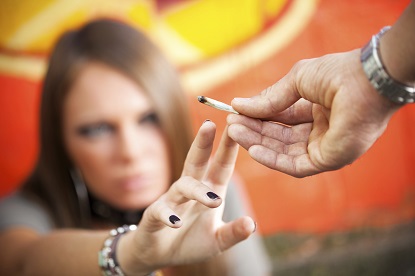
4. Pot Symbols – For some reason, kids who smoke marijuana enjoy advertising their pot use. Posters with pot leaves or stickers/pins with the numbers 420 broadcast to others an above average interest in marijuana.
5. Talking in Code – Most teens are extreme about their privacy, but if you notice that your teen begins using code words when you walk by or regularly leaves the room with his phone when you are around, it could be they are talking about drugs.
6. Finger Burns – If you notice burns on the tips of your teen’s thumb and forefinger it’s probably the result of smoking a joint to the very end. These particular burns are hard to explain in any other way.
7. Isolation or Depression – Again, teens do like to be off on their own, but parents can tell the difference between independence and isolation. If your teen seems depressed and insists on being alone in his/her room rather than taking part in family activities, it deserves investigation.
8. Academic Slippage – A drop in grades is a common sign of drug use. Problems with teachers or school officials and other behavior problems can be a red light signaling deeper issues.
9. Looking for Reasons to Be Out of the House – If your teen suddenly comes up with excuses to leave the house at night you need to find out why. It isn’t likely that your teen suddenly cares about the trash getting out or the dog wanting some exercise.
10. Lack of Motivation – If your teen is no longer interested in things that he/she once enjoyed, or is hard to motivate toward anything, this is a common side effect of pot smoking.
Read More About A Dangerous Drug Trend In Teens


